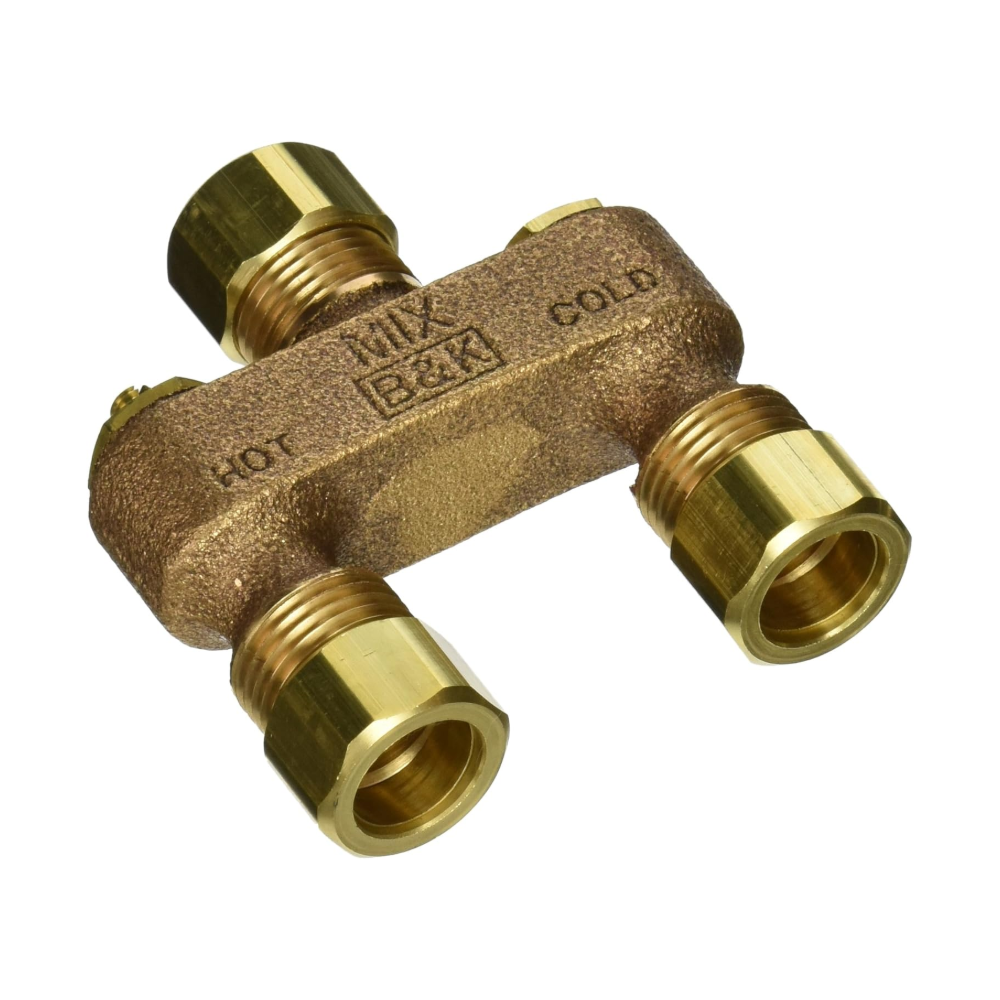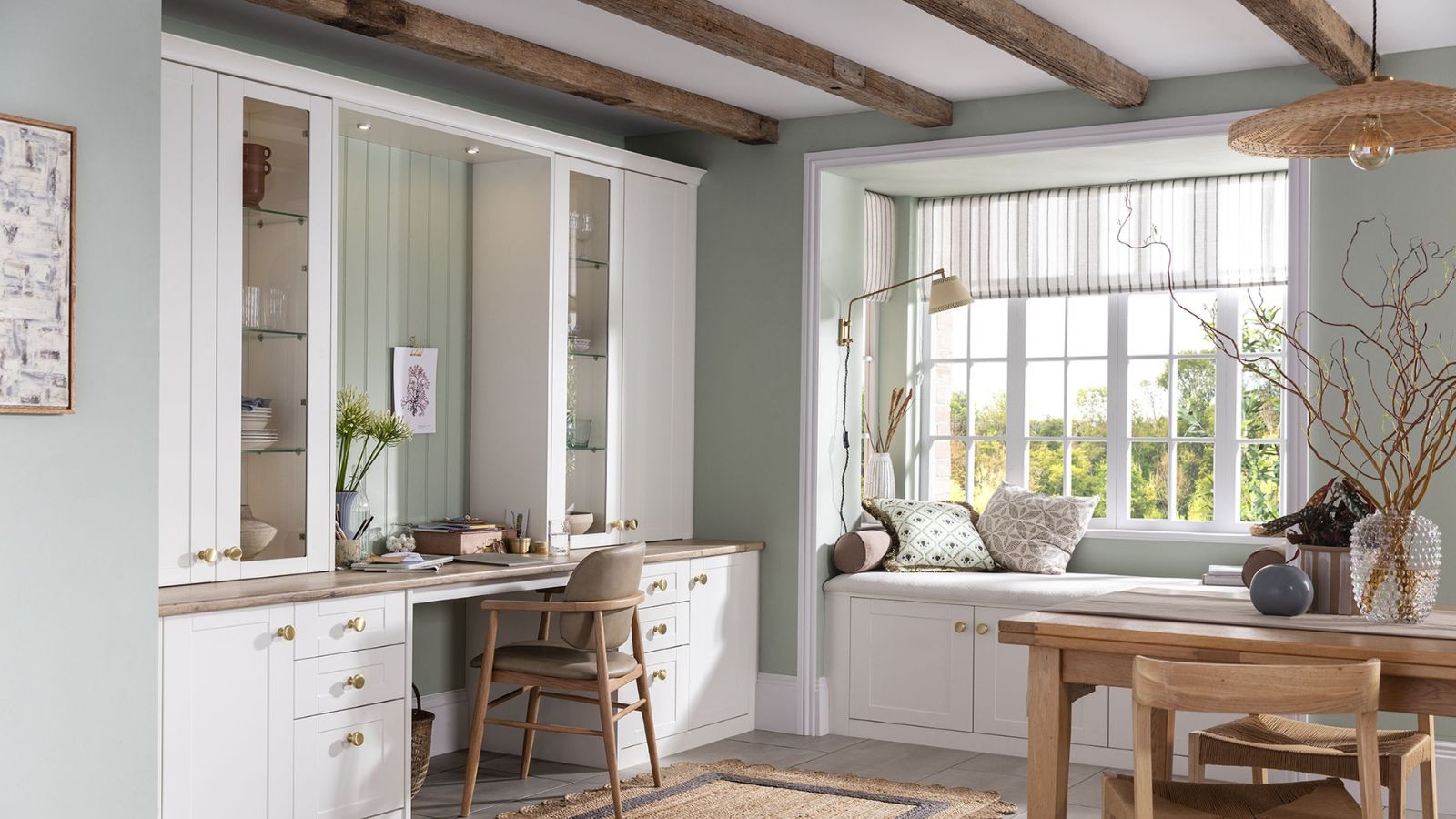Experiencing 'toilet sweating'? 6 expert tips to stop condensation on toilet cisterns
Learn how to prevent condensation on toilet cisterns – and what causes it in the first place
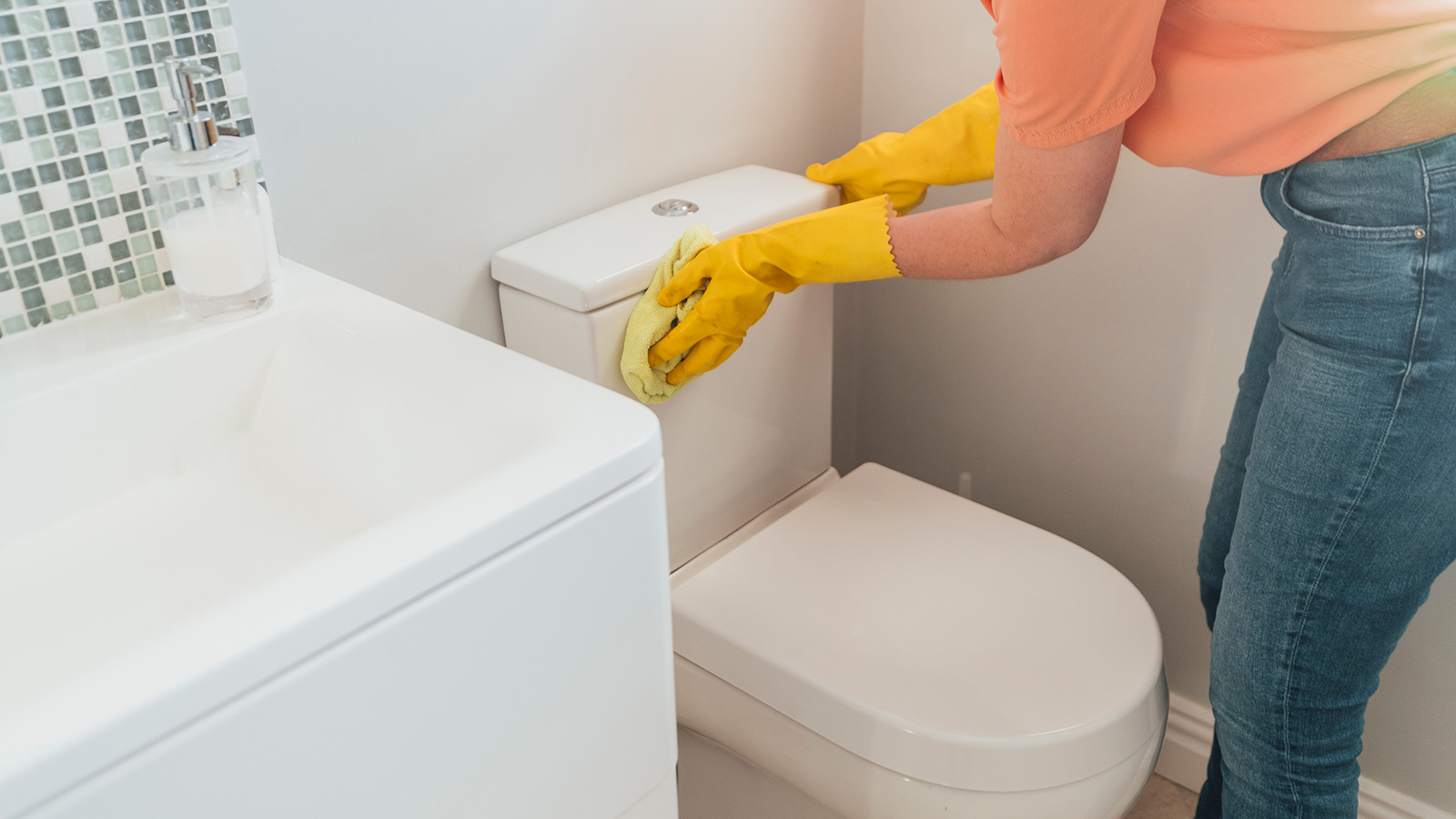
Condensation on toilet cisterns – aka 'toilet sweating' – might be a common problem for homeowners, but that doesn't stop it being an incredibly annoying one.
While it is always useful to understand how to stop condensation, toilet sweating is not, thankfully, anything too much to worry about. That said, a soggy cistern covered in running drops of water looks pretty unpleasant and will need a daily wipe down if you want to avoid water pooling around the toilet seat.
So, if you are determined to rid yourself of toilet condensation, we are here to take you through the easy steps you can take to minimise the issue.
How to stop condensation on toilet cisterns
There are several steps you can take to prevent – or at least minimise – toilet sweating.
1. Ventilate the room
According to Michael Zohouri, founder of Pyramid Eco, the first thing you need to check is whether there is sufficient ventilation. Make sure you're using one of the best bathroom extractor fans to remove moisture from the air, and try opening a window or leaving the door open after a shower if you can.
2. Fit a programmable radiator valve
Another option is to keep the room at a slightly cooler temperature than the rest of the house by fitting a programmable radiator valve, recommends DIY expert Steve Jenkins. If your bathroom is slightly cooler, there’s less likely to be humidity and condensation.
3. Insulate your bathroom
If you find that condensation is also forming on the walls and/or the ceiling of your bathroom, then you would do well to look into adding in extra insulation. Keeping the walls and ceiling warm will stop the condensation forming on them
Bring your dream home to life with expert advice, how to guides and design inspiration. Sign up for our newsletter and get two free tickets to a Homebuilding & Renovating Show near you.
4. Install a condensation drip tray
These plastic trays fit under the cistern and catch excess moisture – they don't look terribly attractive but they stop water pooling on the floor.
5. Wait to flush the toilet until after showering or bathing
The water in the cistern should be a little less cold if it has been sitting in there a while, thus reducing condensation.
6. Fit an anti-sweat valve
If the problem persists, there are other options you can try, such as fitting an anti-sweat valve, which slightly raises the cistern’s temperature to help prevent condensation. Depending on your DIY plumbing skills, you may need to call in a professional to fit the valve.

Steve is has been a writer and editor for two decades. He is an avid DIYer with over 20 years of experience in transforming and renovating homes. He specialises in painting and decorating, but has strong all-round building skills, having previously worked in the industry for 10 years.

Michael Zohouri is the founder of Pyramid Eco with over a decade of retrofit experience. He specialises in tackling mould, damp and ventilation issues, alongside sustainable upgrades such as heat pump installations. His focus is on creating healthier homes that improve air quality and energy efficiency.
Why does condensation on toilet cisterns occur?
It is always useful to to get to grips with why condensation occurs if you want to win the fight against it. In the same way as window condensation, when warm air hits a cold surface, moisture is pulled (or ‘condensed’) out of the air, settling on the cold surface as drops of water.
"There are three main things that will affect whether or not condensation forms in your home: air moisture levels, air temperature and the temperature of the surfaces this air is coming into contact with," says Chris Michael, Managing Director of UK air treatment specialist Meaco.
In the case of a WC, the cistern becomes a very cold surface every time the toilet is flushed and refilled with cold water. If the room is warm (which is often will be after bathing or showering), condensation will form on the cistern.
Obviously the warmer the room, the more condensation will form on any cold surface.

Chris and his partner Michelle started Meaco in 1991. Meaco is now regarded internationally as a major player in the dehumidifier industry selling to 20+ countries throughout Europe, North America and South Africa. Meaco sets the benchmark for quality and development in its sector, leading by example and reducing the energy consumption of its appliances.
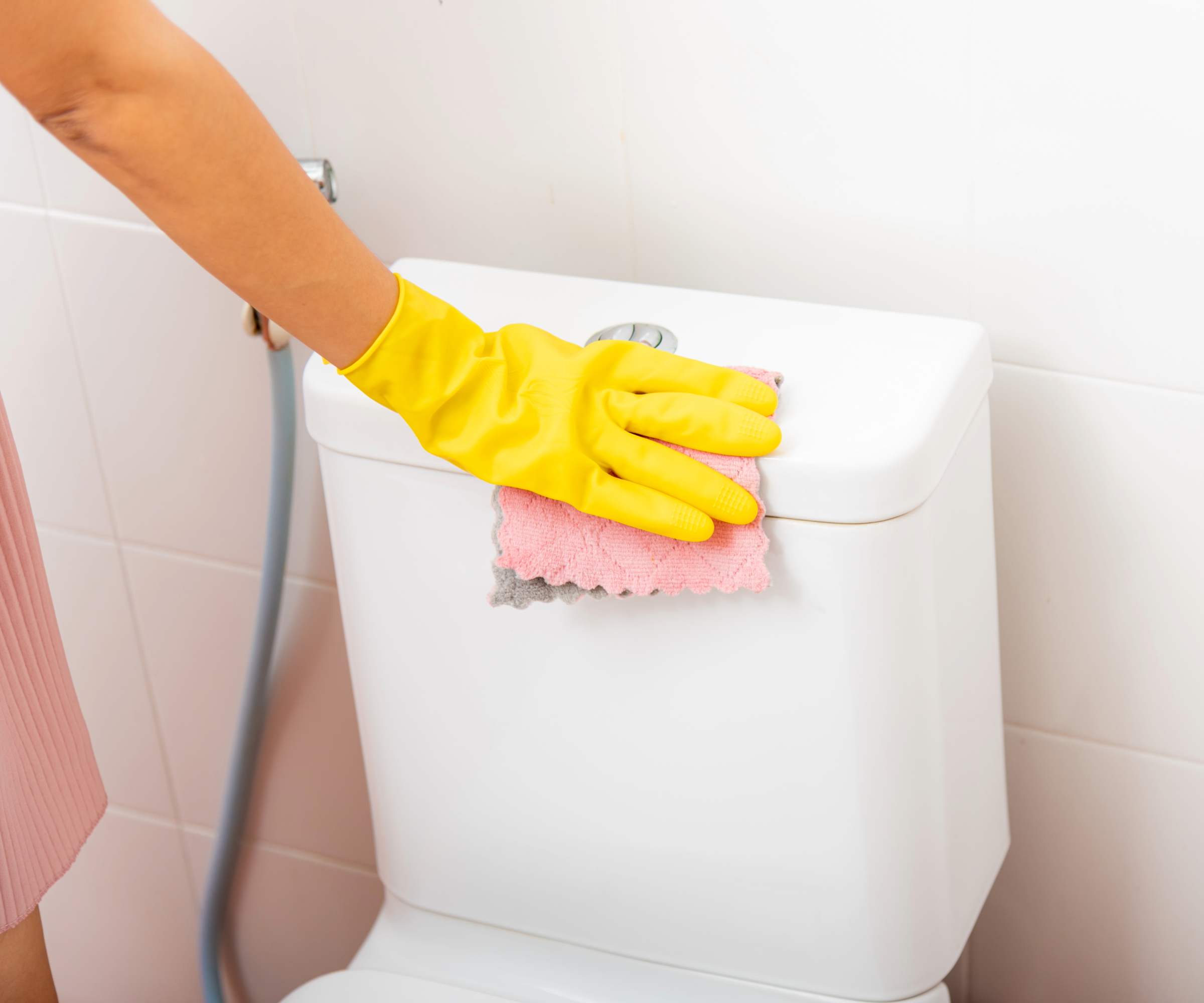
Can toilet condensation cause damp or mould?
"It definitely can," says Michael Zohouri. "If the cistern is dripping regularly and that moisture sits on the floor or runs behind the unit, it creates a perfect environment for mould in bathrooms. It’s not always obvious either – sometimes it starts with discoloured paint or a damp smell in the corner of the bathroom."
What's more, if the water is left to soak into your bathroom flooring, it could lead to rotting issues with timber floor joists too. This can all be prevented by keeping on top of the condensation by wiping the cistern down to dry it off.
Can you insulate a toilet cistern?
In all honesty, insulating your toilet cistern might sound a little strange – but it could just ensure your toilet sweating becomes a thing of the past.
There are various DIY hacks you might like to consider, such as using bubble wrap to line the inside of your cistern. Alternatively, you could try using rolls of closed cell foam material or waterproof insulation.
That said, here in the UK, insulating the interior of a toilet cistern is not a common job, and unless you are seriously concerned about excessive condensation forming on your toilet tank it could be unnecessary providing you incorporate good ventilation. Emptying the cistern, cutting the insulation to fit and glueing it into place is time consuming and fiddly.
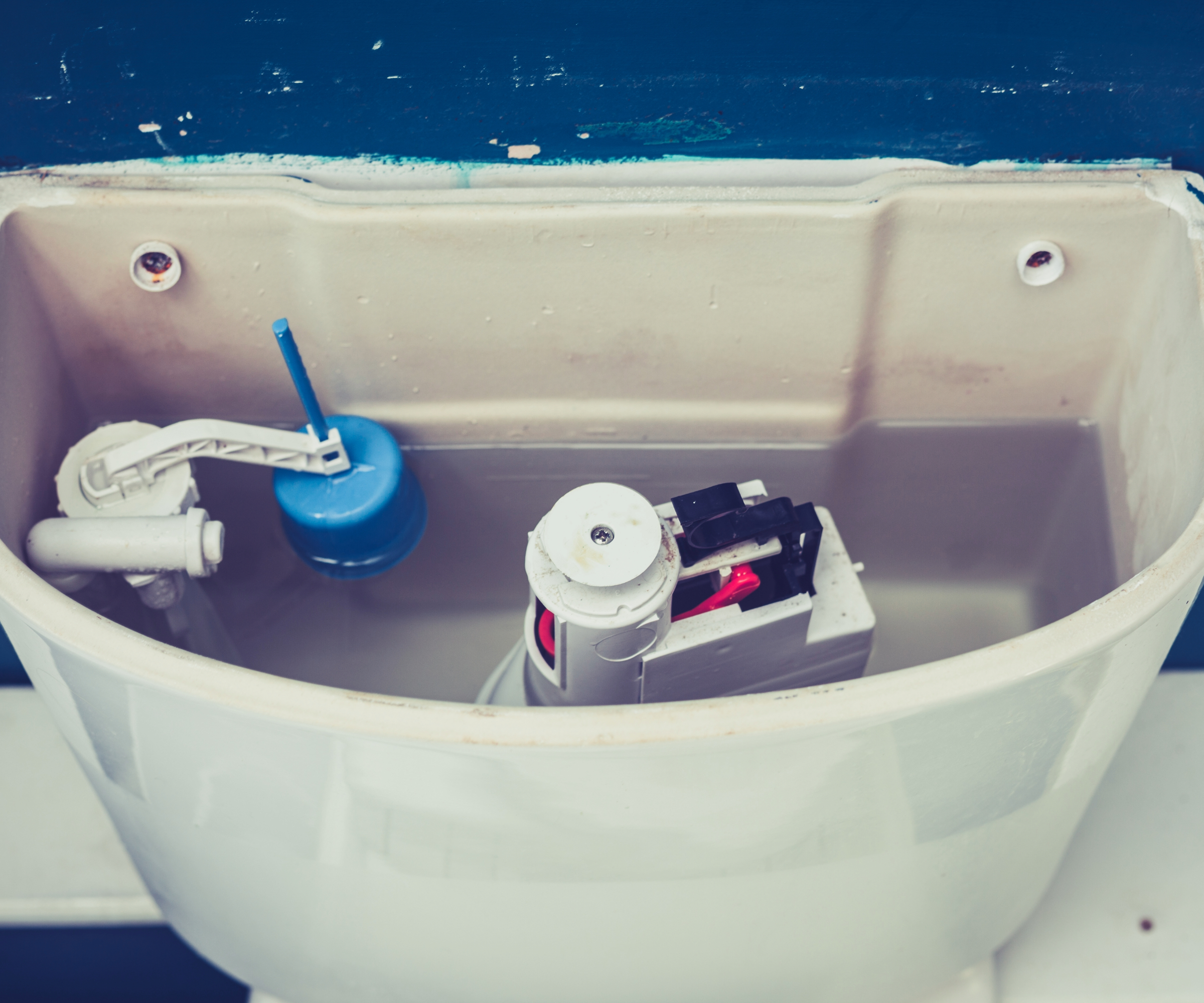
Excess moisture and humidity levels that are off the scale are both causes of condensation in bathrooms and these can, if left unchecked, result in mould in your house – a far more serious issue.
Be on the lookout for brown, black or yellow patches in the corners of the room and around the shower or bath. Not only does this look ugly and smell musty, but it can also lead to health issues, so it's worth learning how to remove mould from walls.
Natasha was Homebuilding & Renovating’s Associate Content Editor and was a member of the Homebuilding team for over two decades. In her role on Homebuilding & Renovating she imparted her knowledge on a wide range of renovation topics, from window condensation to renovating bathrooms, to removing walls and adding an extension. She continues to write for Homebuilding on these topics, and more. An experienced journalist and renovation expert, she also writes for a number of other homes titles, including Homes & Gardens and Ideal Homes. Over the years Natasha has renovated and carried out a side extension to a Victorian terrace. She is currently living in the rural Edwardian cottage she renovated and extended on a largely DIY basis, living on site for the duration of the project.
- Megan MilsteadContent Editor
